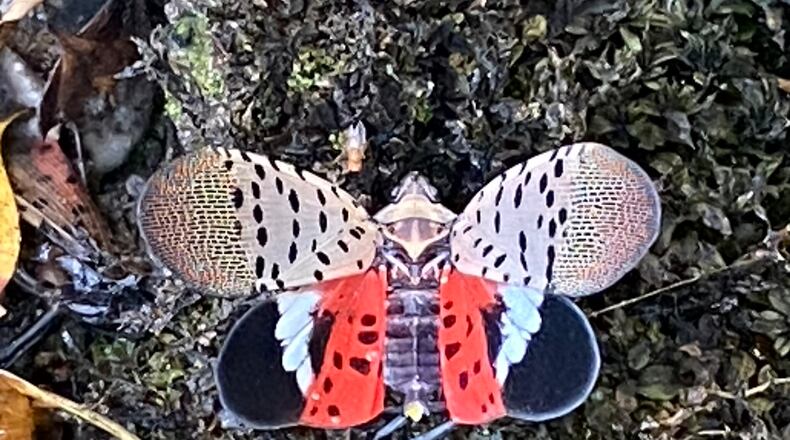Spotted lanternfly has made its way into eastern Clark County. While this hasn’t been officially announced and Clark is not quarantined, my friend, colleague and Ohio State University Extension SLF leader texted me last week to let me know.
Oh joy, I texted back, the fun begins, for our area at least. The most recent counties to have it identified include Washington, Scioto, Henry and Clark. It hasn’t been confirmed yet in the rest of the Miami Valley counties. The nearest counties were Hamilton and Franklin, until last week.
What does this confirmation mean?
- Eventually, the Ohio Department of Agriculture will soon announce these counties as quarantined. When this occurs, products such as trees and nursery stock may not be removed from the area without a compliance agreement, permit or inspection certificate.
- For grape and hops growers, it means additional vigilance to prevent the pest from harming the plants. SLF has the potential to decrease production in these crops (and a few others).
- For homeowners, it will be extremely annoying. You will not like them, guaranteed. More on that below. It also means that you should inspect anything that you take out of a quarantined county.
- Cars, campers, firewood and boats should be thoroughly inspected before leaving the county. Ensure there are no hitchhikers. This is the primary cause of the spread through Ohio.
Other items that should be inspected include (but are not limited to) outdoor industrial and construction materials, shipping and storage containers, outdoor housed items (tractors, mowers, etc.), agricultural equipment and children’s playthings.
The above can be summed up as pretty much anything that you move out of the county. Eggs, nymphs and adults are good at hitching a ride. Adult females lay their eggs on cars, 55-gallon drums, trains and more. Since they are extremely difficult to spot, they easily slip by.
For homeowners, it also means a mess in the landscape, particularly if you have maple trees. SLF feeds on the phloem, taking in sugars produced by the plant. This sugar or honeydew pretty much “squirts” through the SLF, resulting in a sticky mess under the plant.
On top of that, a fungus called sooty mold begins to develop on top of the honeydew, rendering a sticky, sooty mess. This is the annoying part.
Once ODA confirms SLF in a county, you don’t have to alert anyone. Simply step on it (or them) to hopefully deplete populations. If it hasn’t been confirmed, alert your local county Extension office or ODA.
UPCOMING EDUCATION EVENT
To learn more about Spotted Lanternfly, including history, identification and management, register for the SLF Zoom at 6 p.m. Aug. 26. Register here: go.osu.edu/SLFMiamivalley
About the Author

